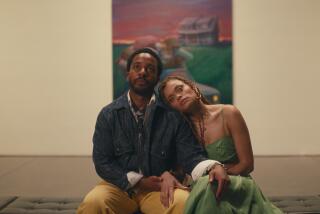Mondo Andy : BIOGRAPHY/MEMOIR :...
When Andy Warhol decreed 15 minutes of world fame as modern manâs birthright he obviously wasnât speaking about himself. Nearly a decade after his death, the painter-filmmaker-scenemaker is more famous than ever. This year, two Warhol-related films (âI Shot Andy Warholâ and âBasquiatâ) are scheduled for release, and the parade of books that began with the âtell-allâ opuses of Victor Bockris, Bob Collaciello and Pat Hackett shows no sign of abating.
Whatâs different now is that the spotlight has shifted from Warhol to his circle at the Factory. This legendary studio/hangout on East 47th Street in New York was ground zero in the mid-1960s for a gay bohemian demimonde that Warhol ruled before retiring in the 1980s to the position of Euro-trash court jester, Studio 54 mascot and Roy Cohn crony.
As might be expected from its title, the anthology âPop Out: Queer Warholâ presumes to deal with the avant-garde overlordâs gayness in a forthright manner. It doesnât. The introduction by a trio of editors criticizes recent efforts to âde-gayâ Warhol by speaking of his paintings rather than his films, like âCouch,â âBlow Job,â âHorse,â âMy Hustler,â âThe Chelsea Girlsâ and â**** [Four Stars],â and the homosexual coterie they portrayed. But while âPop Outâ contains useful essays by Simon Watney and Tom Waugh about the impact of Warholâs gang on pre-Stonewall culture, its primary interest isnât Warhol at all, but the âfactoryâ of academe.
Thatâs where youâll learn how âthe shame-delineated place of identity doesnât determine the consistency or meaning of that identity, and race, gender, class, sexuality, appearance and ableness are only a few of the defining social constructions that will crystallize there, developing from this originary affect their particular structures of expression, creativity, pleasure and struggle.â
No, Iâm not making this up. These are the words of Eve Kosofsky Sedgwick, a Newman Ivy White professor of English at Duke University who, though homosexually challenged, has somehow risen to the level of grand high pooh-bah of all collegiate âQueer Studiesâ courses. Here youâll find Warhol reduced to a petri dish specimen while Kosofsky Sedgwick and her âPop Outâ colleagues (nearly every one of whom acknowledges this all-powerful okoge--Japanese for gay camp follower--in their footnotes) set about their real work: attacking other academics.
If you want the real Warhol story, look no further than âThe Velvet Years,â an anthology of photos by Stephen Shore with an essay by novelist Lynne Tillman and interviews with 16 key Factory workers.
Only 17 when he took these pictures, Shore demonstrates a sure sense of how to photograph those for whom posing was as natural as breathing. Complementing his portraits of Edie Sedgwick, Lou Reed, Nico, Ondine and Warhol is Tillmanâs essay, which correctly identifies Warhol as âan artist provocateur, an early warning system of things to come. That was his appeal, in part, to the people who spent time with him at the Factory.â What they thought of him personally, however, is another matter.
âIt was hard not to like Andy,â actress Mary Woronov tells Tillman, describing him as ânever not nice.â Factory major domo Gerard Malanga, on the other hand, claims that âAndy loved to manipulate people.â Both are right. Moreover, the fact that each has gone on to an important post-Factory career speaks well of Warholâs intuition about his many talented proteges.
âMythologies of the Heartâ is Malangaâs 28th volume of poetry--an avocation begun well before his Warhol years. Warhol makes a brief appearance in a poem called âWhereabouts Unknown,â trying to break down the door of a bedroom were Malanga is making love to a girlfriend. But Warholâs real influence on his former assistant can be seen in another poem, âUma Thurmanâs Breasts,â in which Malanga tellingly remarks that âthere are limits to what one can imagine, so we do everything with our eyes.â
Woronov, Malangaâs former âwhip danceâ partner at Warholâs âExploding Plastic Inevitableâ shows, has learned similar lessons from Warhol--and then some. Long recognized as a cult film star for âEating Raoulâ and âRock ânâ Roll High School,â Woronov is also an excellent neo-expressionist painter. The follow-up to âWake for the Angels,â a book of reproductions of her paintings accompanied by darkly funny stories about modern Los Angeles, âSwimming Undergroundâ shows Woronov to be a first-rate prose stylist as well.
Writing of Nico, her only peer in âice queenâ cool, Woronov says, âI had seen chairs creep across the carpet in the hopes she might sit in them.â She also neatly pegs a transvestite with superstar ambitions as âthe overdone showgirl-type of queen-stripper tits, bimbo hair, Louise Nevelson eyelashes and a mouth brought to you by Chevrolet.â But Woronov doesnât spare herself, recounting the streak of genuine sadism her role in âThe Chelsea Girlsâ unleashed and her dealings with âthe mole people,â the Factory subset who introduced her to the joys of controlled substances.
Warhol makes only a few walk-ons here, but Woronov is so skillful at evoking him through tales of inner-circle players like Ondine and Rotten Rita that even the most demanding Warhol-philes should approve.
Now if only someone would get around to writing the ultimate Warhol book: The biography of that most gris of all factory eminences, Dorothy Dean.
Just so long as that someone isnât Eve Kosofsky Sedgwick.
More to Read
Sign up for our Book Club newsletter
Get the latest news, events and more from the Los Angeles Times Book Club, and help us get L.A. reading and talking.
You may occasionally receive promotional content from the Los Angeles Times.







